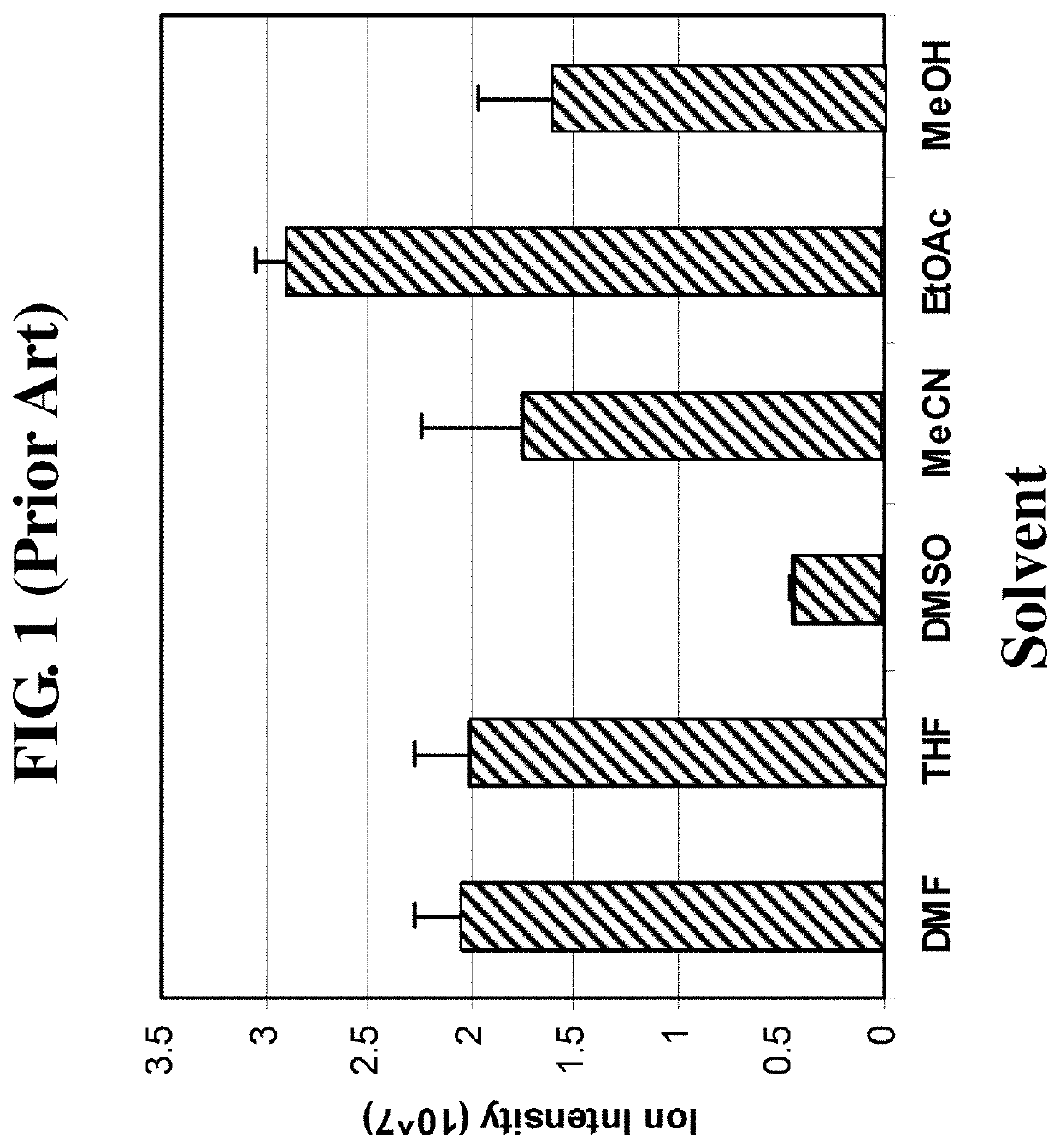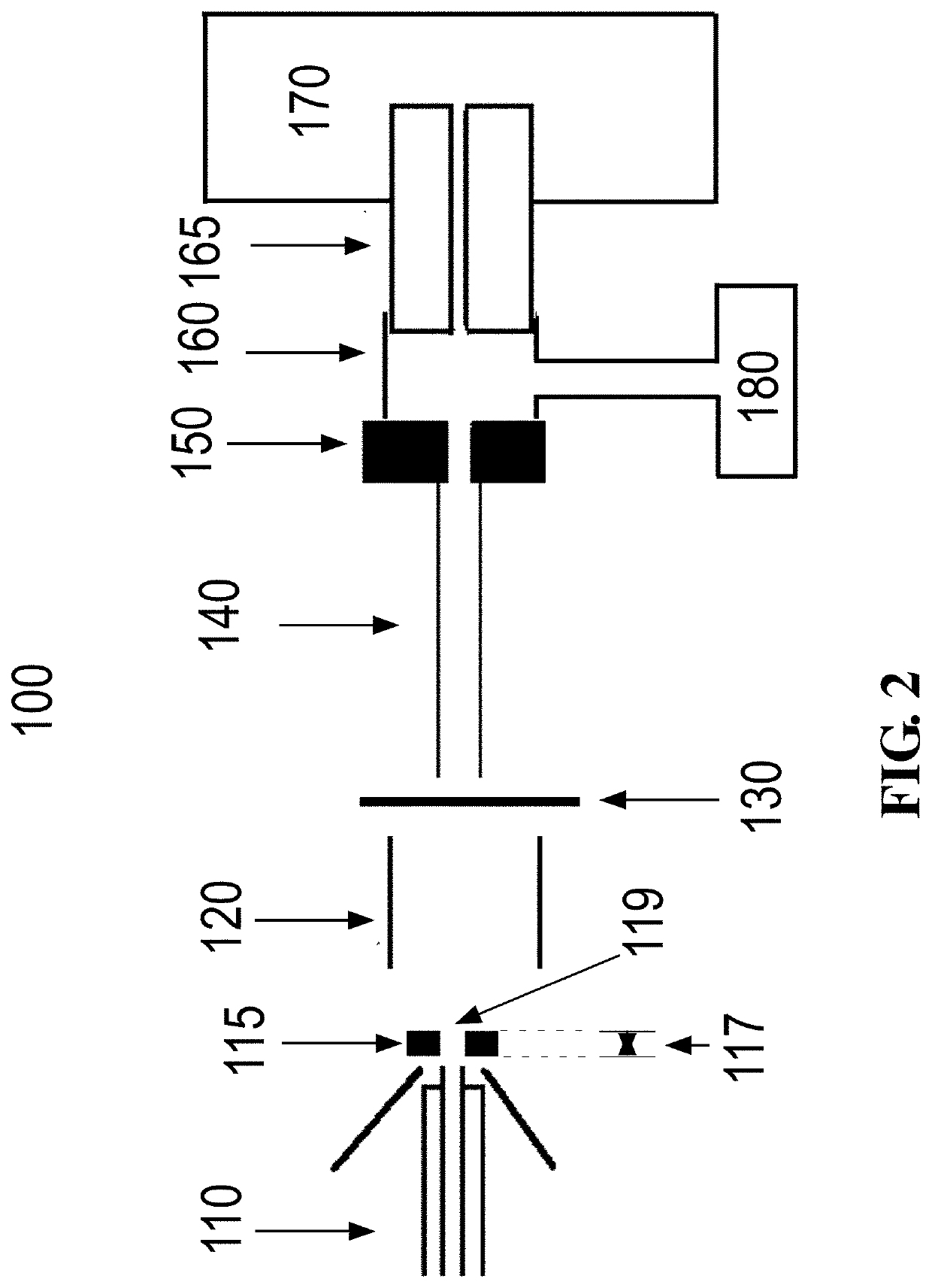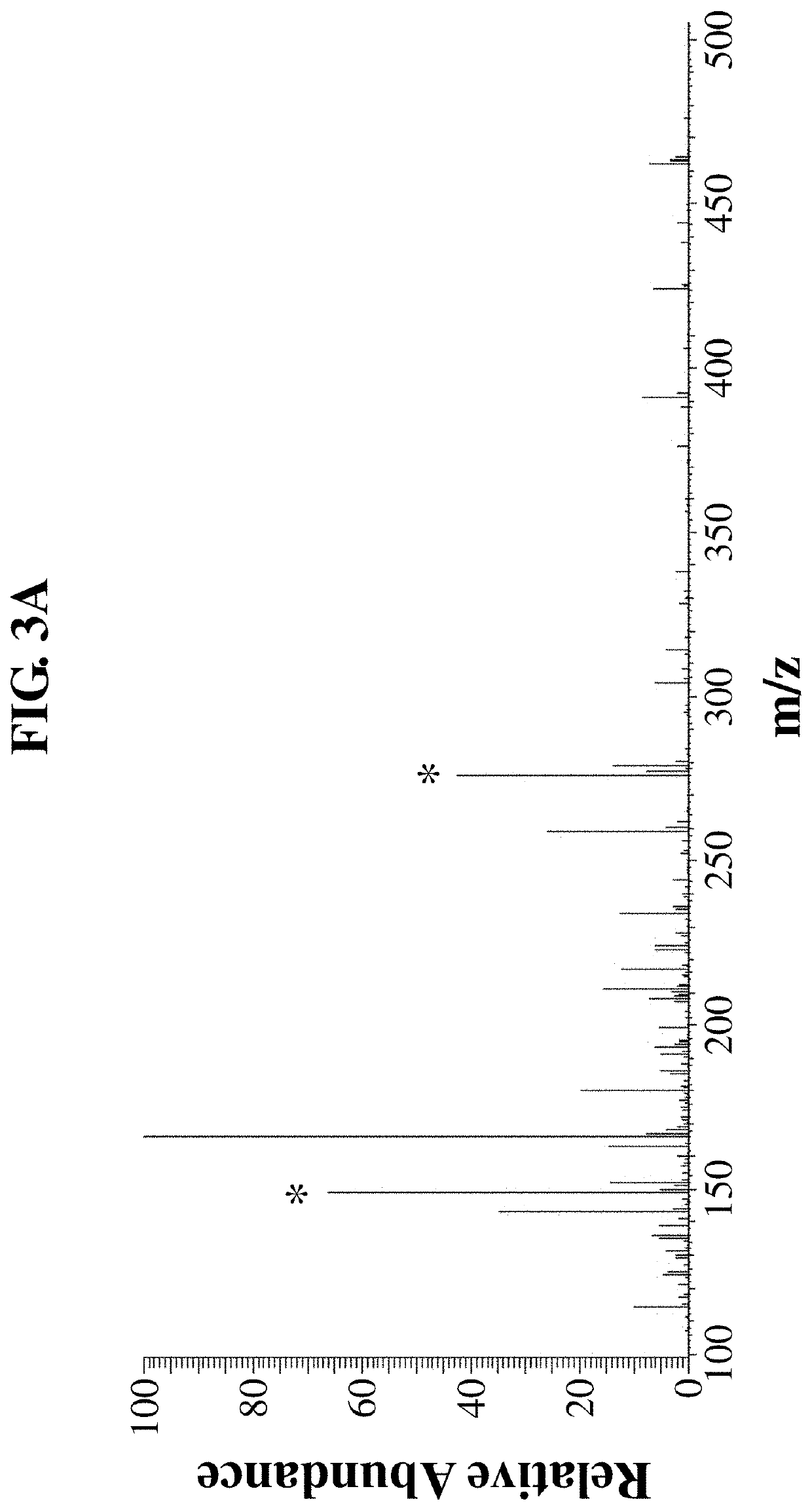Apparatus and method for reducing matrix effects
a matrix effect and apparatus technology, applied in the field of apparatus and method for reducing matrix effects, can solve the problems of inefficiency of ion detection of molecules of interest, difficult extraction of urine from urine, and inability to detect ions of interest, so as to reduce the suppression of ions of interest, reduce background chemicals, and reduce the effect of unwanted chemicals
- Summary
- Abstract
- Description
- Claims
- Application Information
AI Technical Summary
Benefits of technology
Problems solved by technology
Method used
Image
Examples
example 1
[0133]A MOSQUITO® robot (TTP Labtech, Cambridge, UK) was used to deposit ninety six (96) samples onto a first QUICKSTRIP® (IonSense Inc., Saugus, Mass.) wire mesh screen using a 96 well format (eight (8) rows by twelve (12) columns). The 96 positions were divided into four sections of 24 positions to allow four (4) separate analyses (each of the four (4) separate analyses was made up of two (2) rows of 12). In row 1, positions 1-4, 1000 nL of a urine sample containing no added cocaine, a 250 ng / mL solution of cocaine-d3 and no added methadone were deposited; in row 1 positions 5-8, 1000 nL of a urine sample doped with a mixture of a 50 ng / mL solution of cocaine, a 250 ng / mL solution of cocaine-d3 and a 50 ng / mL solution of methadone were deposited; in row 1 positions 9-12, 1000 nL of a urine sample doped with a mixture of a 100 ng / mL solution of cocaine, a 100 ng / mL solution of cocaine-d3 and a 100 ng / mL solution of methadone were deposited; in row 2 positions 1-4, 1000 nL of a urin...
example 2
[0135]The Mosquito robot was used to deposit one hundred and twenty (120) samples onto a second QuickStrip wire mesh screen using a 384 well format (16 rows by 24 columns). The internal standards (500 ng / mL) were mixed with the drug of interest in urine. Dilutions were made in urine. The hundred and twenty (120) positions were divided into five (5) sections of twenty four (24) positions to allow five (5) concentrations to be analyzed. In row 1, positions 1-24, 1,000 nL of a urine sample doped with a mixture of a 50 ng / mL cocaine, 500 ng / mL cocaine-d3, 50 ng / mL methadone and a 500 ng / mL methadone-d3 were deposited; in row 2, positions 1-24, 1,000 nL of a urine sample doped with a mixture of a 100 ng / mL cocaine, 500 ng / mL cocaine-d3, 100 ng / mL methadone and a 500 ng / mL methadone-d3 were deposited; in row 3, positions 1-24, 1,000 nL of a urine sample doped with a mixture of a 250 ng / mL cocaine, 500 ng / mL cocaine-d3, 250 ng / mL methadone and a 500 ng / mL methadone-d3 were deposited; in ro...
example 3
[0137]The Mosquito robot was used to deposit a series of samples onto a third QuickStrip wire mesh screen. A synthetic urine sample was spiked with a mixture of three drugs of abuse (lidocaine, cocaine and methadone) present at concentrations of 50 ng / mL, 100 ng / mL, 250 ng / mL, 500 ng / mL and 1,000 ng / mL. A 1000 nL aliquot of each of the samples was deposited on the third mesh. Positive DART API mass spectra of the synthetic urine samples were measured.
[0138]DART API mass spectral analysis of the third mesh was performed. Intense species were observed in the DART API mass spectra of the sample containing a mixture of lidocaine (250 ng / mL), cocaine (250 ng / mL), and methadone (250 ng / mL), as shown in FIG. 10E. The intense species observed in FIG. 10E at m / z 235.18, 304.15 and 310.22 correspond to the intact lidocaine (labelled L), cocaine (labelled Co) and methadone (labelled M) protonated molecule. The intense species at m / z 139.054 (labelled with an asterisk) and m / z 279.159 (labelled...
PUM
 Login to View More
Login to View More Abstract
Description
Claims
Application Information
 Login to View More
Login to View More - R&D
- Intellectual Property
- Life Sciences
- Materials
- Tech Scout
- Unparalleled Data Quality
- Higher Quality Content
- 60% Fewer Hallucinations
Browse by: Latest US Patents, China's latest patents, Technical Efficacy Thesaurus, Application Domain, Technology Topic, Popular Technical Reports.
© 2025 PatSnap. All rights reserved.Legal|Privacy policy|Modern Slavery Act Transparency Statement|Sitemap|About US| Contact US: help@patsnap.com



